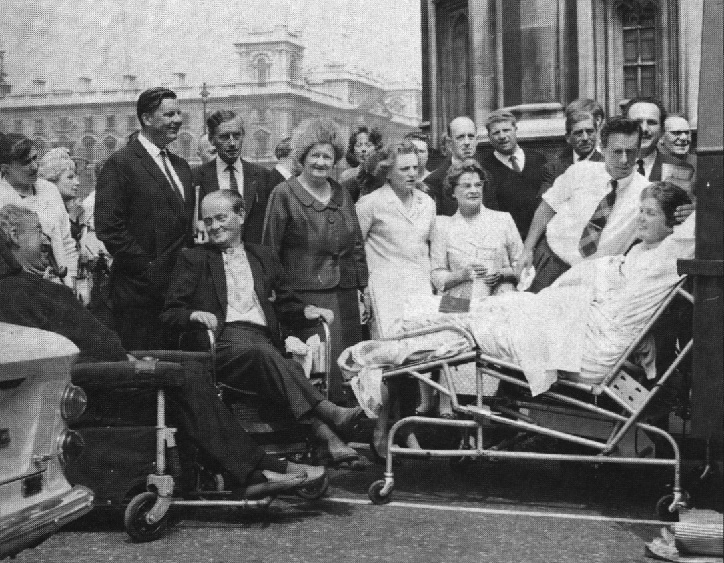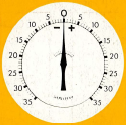When Ann Armstrong (Doris Page) died, she left behind a very large archive of information which is of interest for many reasons.She has recorded her experience of living in total dependence on a machine for 36 years, she describes being dependent on the National Health Service from the 1950s onwards and she documents the fight to get the voice of disabled people heard in the 1960s. Via the Responaut, she was also able to communicate with and collect information from other people from around the world. This website is intended to house the archive of documents left by Ann Armstrong, including all the editions of The Responaut, in the hope that this will be of interest to various groups such as disability activists and campaigners, and, historians of social history, of the NHS, and of technology. The website is managed by her son Dr. Brian Page who is now trying to make this collection of published and unpublished material available online as a historical resource. We are most grateful for information from other people who interacted with Ann at any time and we plan to include this correspondence on the site.
About Ann Armstrong

Ann Armstrong was the pen name of Doris Page (Nee Hayward). She was born on the 11th November 1925 in London and lived in Walthamstow. Her father was responsible for looking after dray/shirehorses which were still used to pull delivery carts in London in the 1920s and her mother was a house wife.
She won numerous prizes at her school, but she left school as soon as she could in order to join the Royal Navy and fight in the second world war. She joined the Mediterranean fleet and was stationed in Italy and also Malta. Whilst she was posted in Naples, she met her future husband Ken Page. They were both in signals and in later life still sometimes communicated together in Morse code when they wanted to say something in private (since Ann could never leave the room). She returned from the war aged 19, married Ken and they lived in a tiny bedsit in Whetstone North London until Ken managed to get a local government job in Newbury.
The couple had 2 Children, Brian and Andrew.

The family’s prospects seemed very bright but, in 1955 she contracted polio. Her first book, Patients Prospect, is the story of the isolation she endured at Prospect Park Hospital in Reading.
Life without movement, even movement of a little finger and anchored to a respirator, is inconceivable to many people. Yet that is how Ann Armstrong survived for over thirty years. An attack of severe respiratory polio in 1955 left her dependent on an iron-lung for breath and on other people’s hands for all her needs. Initially her care showed the National Health Service at its best: at the County Isolation Hospital in Berkshire dedicated doctors and nurses fought for her life. Survival assured, she was transferred to a long-stay hospital in Reading for rehabilitation. Yet the aids there – such as pool and gymnasium – proved useless to a patient on a respirator. Gradually Ann realised her progress was virtually non-existent. She was being used as a guinea-pig and as far as the NHS was concerned she could spend the rest of her diminished days in hospital. Yet why should those unfortunate enough to be stricken with long-term incapacity also be separated from their homes and families?
Ann and her ever-supportive husband Ken fought strenuously for her release. In August 1957 she returned home with an expectation of life assessed at three months. When she came out of hospital she undertook a postal journalism course and wrote articles under the pen name Ann Armstrong.
Ann was a member of the National Union of Journalists, the Society of Women Writers and Journalists and the British Association of Industrial Editors.
She has written for The Guardian, The Times, The Lancet, Medical News, Reading Evening news, Church Times, British Weekly, The Lady and SHE. She was also a life member of The Association of Wrens.
From 1963 to 1988 she edited the Responaut, a publication that was by, for and about respirator-aided and other gadget-aided people. She did this from her home while in an iron lung. The magazine featured many progressive disabled people of the time including Megan Du Boisson (founder of DIG, the Disabled Income Group), Paul Hunt (one of the founders of UPIAS, the Union of the Physically Impaired Against Segregation) and Geoffrey Webb.
In 1968 she was awarded an MBE for journalism and editing the Responaut. Her son Brian recalls “This involved wheeling her bed and iron lung into a huge truck which then drove to Buckingham Palace with a police escort so that she could receive the MBE from the Queen. A vivid memory of that is the deep ruts which her bed and iron lung made in the pile of the carpets!!”.

From her bed, Ann campaigned for recognition of the needs of disabled people and for an increase in National Health funding for long-term patients. The Invalids-at-Home Trust was founded in 1965 with the objective of enabling disabled people to live at home with their families.
In 1982 the BBC Radio 4 program Woman’s Hour produced a serial based on her book “Breath Of Life”. It was abridged and produced by Pat McLaughlin. It was read by Margaret Tyzack CBE.
Both her and Ken’s ashes are interred at St George’s church, Newbury, Berkshire. The vicar of St George’s, reverend Burt, produced the first copies of the Responaut by hand on the church Roneo/Mimeigraph machine. A lot of people who worked on the early copies of the Responaut are also interred at St Georges.

